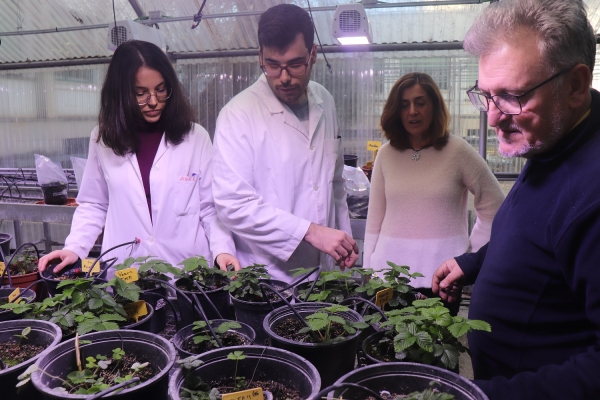Spain boasts the highest strawberry production rate in Europe and, in order to maintain this key economic sector, is always looking to use innovation and research tools to keep being number one within the strawberry market.
This is the mission in which the Biotechnology and Plant Drug Analysis research group from the University of Cordoba plays an important role. They study strawberry fruit ripening, by analyzing the genes related to fruit quality in terms of color, firmness, aroma, taste and texture parameters, seeking to find the best product to be put on the market.
In the process of this research endeavor to improve characteristics and organoleptic properties of this berry, they have described a gene that plays a very important role in the regulation of the ripening process. This is a transcription factor (FaPRE1), which is the gene in charge of translating the genetic signal and making genes for color, aroma and other characteristics specifically express themselves.
Strawberry development is controlled by two master hormones: ABA, which determines the moment when ripening (with color, aroma and hydration changes) starts, and auxins, that are in charge of growth, meaning that these hormones are the ones that decide when strawberries reach the right size, color and taste to be put on the market. The importance of the newly described gene lies in its role as a sentinel of the ripening process since its job of regulating expression is twofold: when the moment arrives to ripen, it manages to silence development genes (auxins) and to begin the expression of ripening genes (ABA).
In this way, the newly described gene appears suddenly when ripening is going to start and it makes sure that only the ripening genes are activated (up to 600 different ones), which will make the fruit bear aromas, colors and tastes that will make it appealing to be eaten and have its seeds spread. In the end, it all comes down to self-perpetuation of the species.
This gene, described in the article published by researchers Laura Medina, Félix Martínez, Francisco Javier Molina, José A. Mercado, Enriqueta Moyano, Antonio Rodríguez, José Luis Caballero, Rosario Blanco and Juan Muñoz (research group leader), is considered to be atypical because it needs to work as a team in order to accomplish gene transcription. In other words, it has the possibility to enhance and silence genes when working with another basic transcription factor, that has the function of binding to DNA.
With the characterization of this gene, the group takes a step further towards achieving a map of important gene regulation. In order to complete it, they are studying a regulator gene set that will complete the map.
As far as marketing and making sure Spain continues to be the leader in the field of strawberry production are concerned, this advance with help to find specific markers that allow for identifying plants with better genetic characteristics.
Medina-Puche, L., Martinez Rivas, F., Molina-Hidalgo, F., Mercado, Jose., Moyano, E., Rodríguez-Franco, A., Caballero, J., Muñoz-Blanco, J., Blanco-Portales, R. (2019). An atypical HLH transcriptional regulator plays a novel and important role in strawberry ripened receptacle. BMC Plant Biology. 19. DOI: 10.1186/s12870-019-2092-4.


